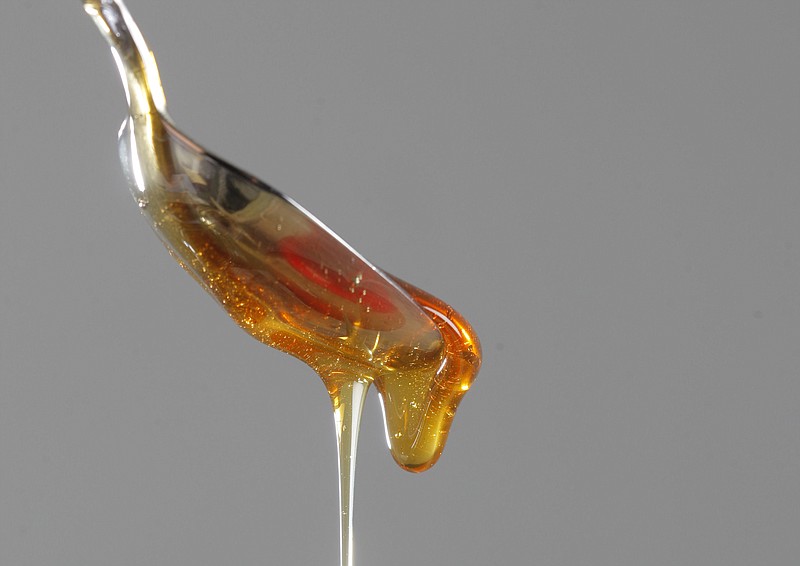Legend tells that ancient Greeks and Egyptians used honey to embalm the dead. Today, honey is largely thought of as a kitchen staple.
Like wine, honey is greatly influenced by its land source.
According to the National Honey Board, there are more than 300 types of honey in the United States, originating from a diverse spread of floral sources, including orange blossom, sourwood and avocado.
The most common varietal is clover honey, a delicately flavored, light-colored honey. Generally, a lighter honey has a milder, sweeter flavor, while a darker honey is more robust.
"People always buy light-colored honey more than dark-colored honey," said Eddie McKenzie, owner of Sale Creek Honey. "Light-colored honey looks more appealing than dark honey."
While certain areas are known for certain types of honey - blueberry honey is signature to New England, for example - McKenzie said there is not a predominant source in this area.
"Sometimes it's a mixture of so many things, we don't call it any one thing," he said, noting that a lot of Sale Creek honey comes from the tulip poplar trees, privet bushes and blackberry flowers.
McKenzie said he has about 200 hives and harvests twice a year.
"We take the spring crop of honey in late May, then get the bees ready to move up to the Cherokee National Forest to make sourwood honey, and if we have some of that, we usually rob that late July, early August."
All of his honey is raw and unfiltered, strained only to remove the wax. He said his bees are far enough from row crops to avoid insecticides and genetically engineered crops.
His family uses honey as often as possible, he said. "I eat some every day at least once, sometimes just by the spoonful. I like it on any kind of bread."
McKenzie said he uses honey in cooking. "We don't have any sugar at all around here. If it's sweet, it's honey."
Keri Moser, chef at IvyWild, a restaurant in Sewanee, Tenn., said she typically prefers to cook, rather than bake with honey, because adjusting for the added liquid can be complicated and, she said, "I find the [flavor of the] honey often gets lost in the baked goods."
"I prefer to use it in dishes where it's going to make a difference, where you can actually taste its personality."
Moser makes a sweet-and-sour baklava with cremini and shiitake mushrooms, with a honey and balsamic vinegar syrup. She was inspired, she said, both by her love of Moroccan and Greek-influenced cooking, as well as the challenge of presenting creative vegetarian dishes.
Honey, she said, adds a complexity to her dishes.
"It's a complicated flavor, compared to a straight sugar," she said. "I think it adds a richness that's much more interesting."
Honey and balsamic vinegar is also a favorite combination of Blackwell Smith, owner of Blacksmith's Bistro & Bar in St. Elmo. Smith said he prepares a bison burger with onions marinated in balsamic vinegar and honey with herb mayonnaise and cheese.
"Honey and balsamic really go great together. The balsamic is so rich. Adding the honey to it gives it a sweetness," he said. "The [flavors] complement each other and contradict each other at the same time."
Honey, he said, finds its way into a number of recipes. It can be combined with chili paste to make a glaze for chicken or salmon. It also can enrich desserts, whether baking with honey or pouring it over ice cream or lemon-vanilla cheesecake.
"I want to make an ice cream sauce with dates, honey, cognac and lemon," Smith said. "It's an easy way to add a natural sweetness. It's really easy to work with. It's kind of its own little sauce.".
